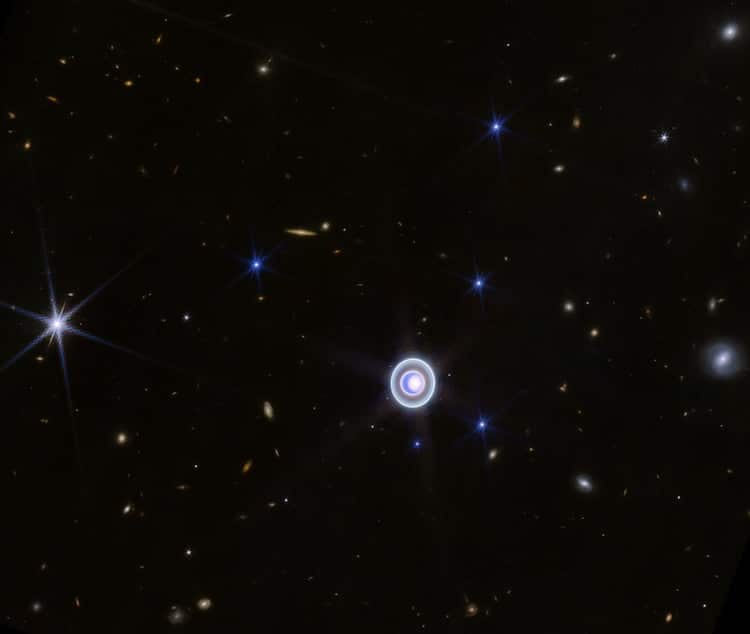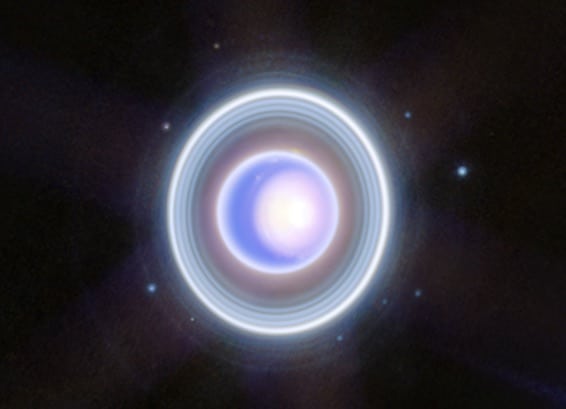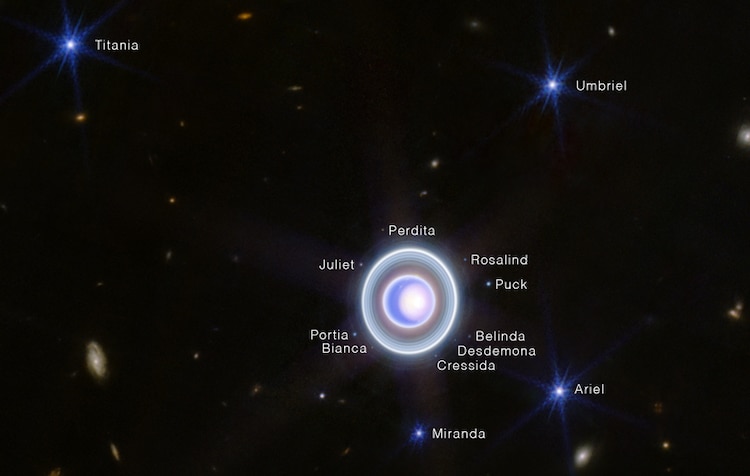The photo is an updated version of animage taken in Aprilof this year.
This unusual orbit also causes Uranus to have some of the most extreme seasons in our solar system.

This wide-field image of Uranus from NIRCam (Near-Infrared Camera) on NASA’s James Webb Space Telescope shows the planet amid a smattering of distant background galaxies. This image also includes 14 of the planet’s 27 moons: Oberon, Titania, Umbriel, Juliet, Perdita, Rosalind, Puck, Belinda, Desdemona, Cressida, Ariel, Miranda, Bianca, and Portia. (Photo: NASA, ESA, CSA, STScI)

This image of Uranus from NIRCam (Near-Infrared Camera) on NASA’s James Webb Space Telescope exquisitely captures Uranus’s seasonal north polar cap and dim inner and outer rings. This Webb image also shows 9 of the planet’s 27 moons – clockwise starting at 2 o’clock, they are: Rosalind, Puck, Belinda, Desdemona, Cressida, Bianca, Portia, Juliet, and Perdita. (Photo: NASA, ESA, CSA, STScI)

Annotated wide-field compass image of Uranus with some of its 27 moons and a few prominent stars (with characteristic diffraction spikes) labelled.(Photo: NASA, ESA, CSA, STScI)